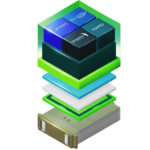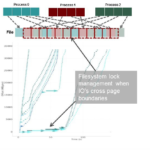This is the first in a five-part series from a report exploring the potential of unified deep learning with CPU, GPU and FGPA technologies. This post explores the machine learning potential of taking a combined approach to these technologies.
What a 200G HDR InfiniBand Solution Means for Today’s Advanced Data Centers
The world of today’s HPC computing is driven by the ever-increasing generation and consumption of digital information. And the ability to analyze this rapidly growing pool of data, and extrapolate meaningful insights, gives modern businesses a competitive edge. Download the full report, “Introducing 200G HDR InfiniBand Solutions,” to learn about how Mellanox Technologies end-to-end 200G HDR InfiniBand solution is helping enable the next generation of data centers.
HDR 200G InfiniBand: Empowering Next Generation Data Centers
The need for faster data movement has never been more critical to the worlds of HPC and machine learning. In light of this demand, companies like Mellanox Technologies are working to introduce solutions to address the need for HPC and deep learning platforms to move and analyze data both in real-time and at faster speeds than ever.Download the new white paper from Mellanox that explores the company’s end-to-end HDR 200G InfiniBand product portfolio and the benefits of in-network computing.
Successfully Managing Workload Convergence in Your Data Center
Modern enterprises are being challenged to implement new technologies and produce results faster without increasing their IT budgets. This is the first a series of features exploring new resource management solutions for workload convergence, such as Bright Cluster Manager by Bright Computing.
Challenges to Managing an HPC Software Stack
The HPC system software stack tends to be complicated, assembled out of a diverse mix of somewhat compatible open source and commercial components. This is the second article in a four-part series that explores using Intel HPC Orchestrator to solve HPC software stack management challenges. Download the full insideHPC Special Report.
Simplifying HPC Software Stack Management
While most of the fundamental HPC system software building blocks are now open source, dealing with the sheer number of components and their inherently complex interdependencies has created a barrier to adoption of HPC for many organizations. This is the first article in a four-part series that explores using Intel HPC Orchestrator to solve HPC software stack management challenges.
Moving Toward the Cloud & Seamless HPC
This is the fifth and final entry in an insideHPC series that explores the HPC transition to the cloud and how this move can help create seamless HPC. This series, compiled in a complete Guide, covers cloud computing for HPC, why the OS is important, OpenStack fundamentals and more.
How to Avoid Storage Bottlenecks in the Flash Era
Businesses with I/O-intensive computing environments run into new software challenges almost daily – and many of these concerns today revolve around storage as data continues to grow. DDN is working to help solve one of the challenges to avoid storage bottlenecks. Download this paper to learn about a new software solution that manages at-scale flash to eliminate file system bottlenecks and voids old rules for I/O application optimization.
What Developers Need to Consider When Exploring Machine Learning
Frameworks, applications, libraries and toolkits—journeying through the world of deep learning can be daunting. If you’re trying to decide whether or not to begin a machine or deep learning project, there are several points that should first be considered. This is the first article in a five-part series that covers the steps to take before launching a machine learning startup.








